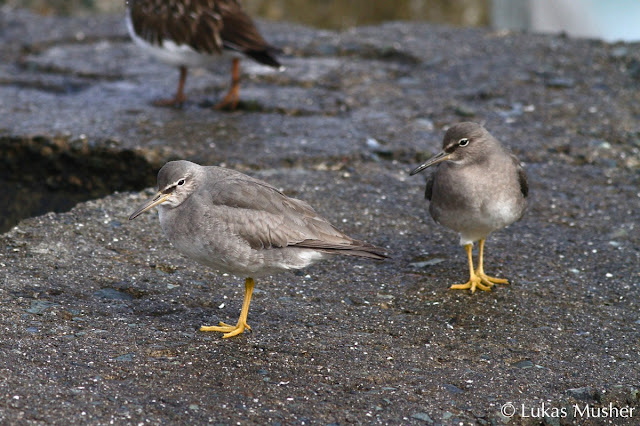According to the publication, California birds may be
sensitive to climate change in any of the following ways: 1) habitat
specialization—species with narrow habitat preferences may be more sensitive to
climate change than habitat generalists; 2) physiological tolerances—species
with broader physiological tolerances may be less likely to be affected by
climate change because they are more resilient to extreme temperatures; 3)
Migratory status—migratory species may be more sensitive to climate change
because the timing of their movements critically depend on climatic conditions
for survival and successful reproduction; and 4) Dispersability—species with
poor dispersal ability may be more sensitive to climate change because they
lack the mechanisms to rapidly habitat track.
Further, climate change poses risks to species by exposing
them to any of the following conditions: 1) Changes in habitat suitability—exposure
to changes in habitat structure in any of a variety of ways may pose risk if
habitat suitability decreases for a given species; 2) changes in food
availability—exposure to changes in the availability or abundance of food
sources undoubtedly affects survival and reproductive success; and 3) changes
in extreme weather—extreme weather has been shown numerous times to lead to low
fecundity or even nest failure in many species.
The authors scored species on all of these seven criteria
and ranked vulnerability of the top 25% of scores from most vulnerable to least
vulnerable to climate change. In
doing so, they added five taxa not originally listed in the California Bird
Species of Special Concern monograph (BSCC; 2008), and raised the priority of
ten more. Further, it was found
that 21 of California’s 29 state or federally threatened or endangered species
were susceptible to the consequences of climate change.
Some results:
By Luke Musher
To read the open access article visit: http://www.plosone.org/article/info:doi/10.1371/journal.pone.0029507
Gardali T, Seavy NE, DiGaudio RT, Comrack LA (2012) A Climate Change Vulnerability Assessment of California's At-Risk Birds. PLoS ONE 7(3): e29507. doi:10.1371/journal.pone.0029507











No comments:
Post a Comment